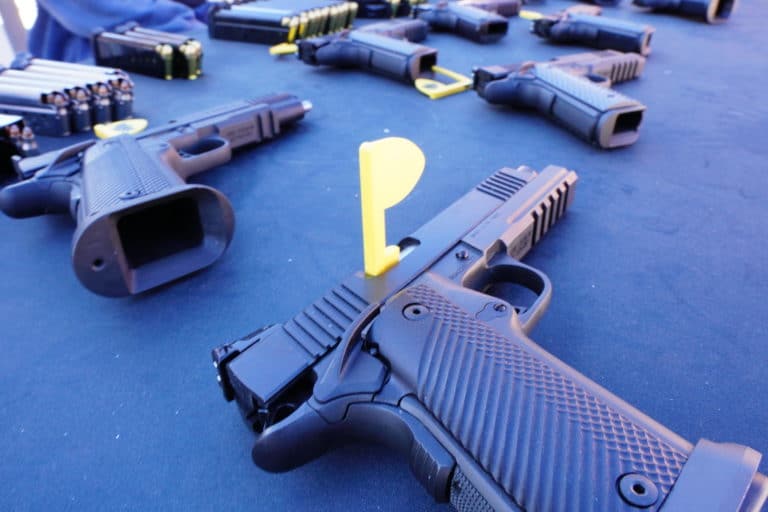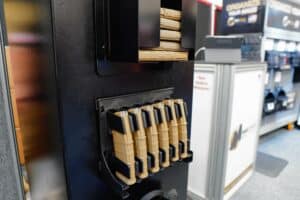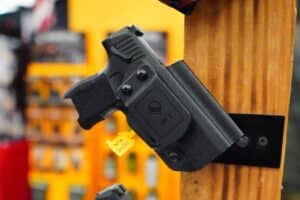California officials tipped their hand this week in announcing which of the state’s blocked handgun restrictions it intends to appeal. In doing so, it also emphasized why many gun owners greet calls for novel “gun safety” regulations with skepticism.
Earlier this month, a federal judge issued a preliminary injunction against significant portions of California’s “Unsafe Handgun Act.” He ruled that the law’s loaded chamber indicator (CLI), magazine disconnect mechanism (MDM), and microstamping requirements lacked compelling historical analogues and were thus unconstitutional.
At first, the decision was greeted with stayed reactions from the state’s typically boisterous gun-control-supporting elected officials, and the prospects of an appeal weren’t certain. Now, the state has officially filed its appeal but tellingly omitted a request for emergency relief on one of the central tenets of the so-called Unsafe Handgun Act.
California Attorney General Rob Bonta (D.) officially asked the Ninth Circuit to review the case. He specifically requested an emergency stay on the part of the decision that affects the requirement new handgun models be equipped with CLIs and MDMs. But he did not ask the court to reinstate the microstamping requirement.
Bonta’s acquiescence to the notion that the provision is likely beyond the pale for even the Ninth Circuit—which amassed a perfect 50-0 record in deciding gun cases in favor of the government before the Bruen decision—bodes well for gun-rights supporters in their legal fight against the law. But it also suggests that California officials suspect the microstamping law they’ve enforced for a decade can’t survive Second Amendment scrutiny. All the while, legal handgun options for California gun owners continued to slowly dry up as the rest of the country continued to use the latest makes and models safely.
Consider the law’s evolution from its inception in 2001. At first, it simply stated that all revolvers and pistols for sale in the state had to have a safety mechanism and pass a drop test to ensure the gun did not go off upon impact. The industry was able to comply with those requirements because, as a general rule, most modern handguns available today are manufactured to be drop-safe and contain some form of safety—either through an affirmative manual safety or more passive safety systems incorporated in a pistol’s trigger, for example.
Then, the state updated the law in 2007 to require that gun manufacturers include a CLI that indicates if the pistol is loaded in a highly-specific way and an MDM that prevents the gun from firing when the magazine is not inserted. The new requirements were certainly outliers in the gun market, but they were at least feasible for larger manufacturers to comply with. Indeed, by the state’s estimates, at least 32 handgun models on California’s handgun roster include the CLI and MDM features.
The 2007 update to the law also included the first reference to microstamping, a concept that would involve a gun’s firing pin imprinting a traceable serial number on the casing of every round fired from the weapon to ostensibly aid law enforcement in tracing crime guns. However, the state acknowledged the theoretical nature of the technology at the time, stipulating that microstamping would not be a required feature on handguns until it was officially declared “feasible.”
In 2013, then-Attorney General Kamala Harris (D.) declared that the technology had arrived. Since then, zero new handguns have been added to the roster because gunmakers have been unable to comply with the requirement citing the unworkable nature of the theoretical technology. Furthermore, popular pistol models that were previously grandfathered onto the roster have continuously been removed, creating a constant squeeze on the market for legal civilian handguns in the state.
Meanwhile, those same gun owners have been forced to watch as law enforcement officers (loosely defined) are free to purchase and use handguns deemed “unsafe” by the state. The state’s own expert law enforcement witness in Boland v. Bonta even testified they carried one of these supposedly “unsafe” firearms while on duty.
The situation has also created perverse incentives for some police officers in the state to use their afforded privilege to purchase and sell off-roster handguns to civilians at a premium, resulting in many well-documented legal scandals.
Each adjustment made to the law over the years continuously ratcheted down the options for legal gun owners to exercise their Supreme Court-affirmed right to own a handgun, to the point of functionally outlawing the sale of new pistol models for the past ten years.
And the feigned use of “safety” concerns to enact what are, in effect, just bans on nearly all modern handguns, it’s clear why some gun owners greet any attempt to impose new “gun safety” regulations with suspicions of ulterior motives. That the state of California knowingly enforced a law based on technology that isn’t, and has never been, implemented on any production gun anywhere in the world left many understandably jaded.
Now that the state has filed an emergency stay request that tacitly acknowledges the likelihood that microstamping won’t be upheld as a “safety” feature, it’s clear that those suspicions are not without some basis in reality.






